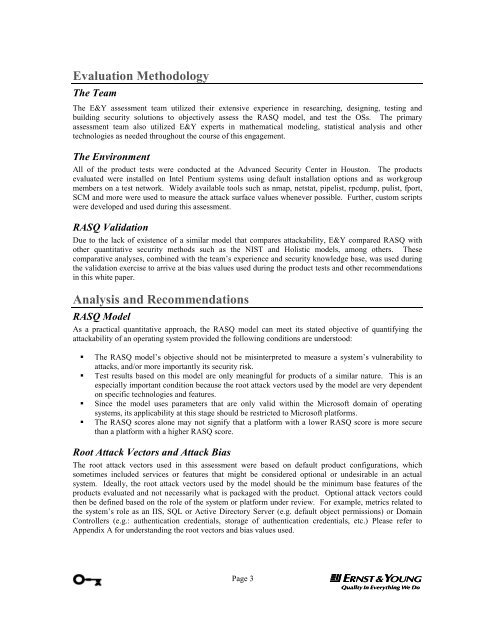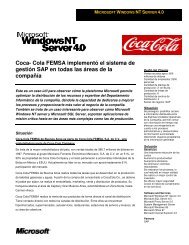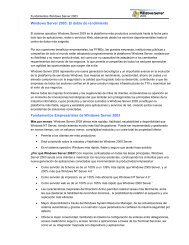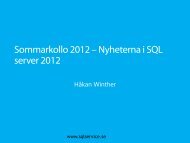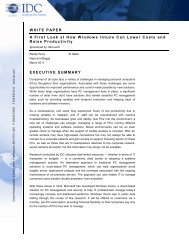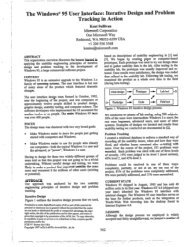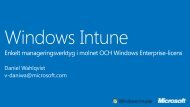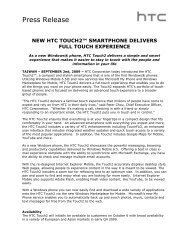Relative Attack Surface Quotient - Microsoft
Relative Attack Surface Quotient - Microsoft
Relative Attack Surface Quotient - Microsoft
Create successful ePaper yourself
Turn your PDF publications into a flip-book with our unique Google optimized e-Paper software.
Evaluation Methodology<br />
The Team<br />
The E&Y assessment team utilized their extensive experience in researching, designing, testing and<br />
building security solutions to objectively assess the RASQ model, and test the OSs. The primary<br />
assessment team also utilized E&Y experts in mathematical modeling, statistical analysis and other<br />
technologies as needed throughout the course of this engagement.<br />
The Environment<br />
All of the product tests were conducted at the Advanced Security Center in Houston. The products<br />
evaluated were installed on Intel Pentium systems using default installation options and as workgroup<br />
members on a test network. Widely available tools such as nmap, netstat, pipelist, rpcdump, pulist, fport,<br />
SCM and more were used to measure the attack surface values whenever possible. Further, custom scripts<br />
were developed and used during this assessment.<br />
RASQ Validation<br />
Due to the lack of existence of a similar model that compares attackability, E&Y compared RASQ with<br />
other quantitative security methods such as the NIST and Holistic models, among others. These<br />
comparative analyses, combined with the team’s experience and security knowledge base, was used during<br />
the validation exercise to arrive at the bias values used during the product tests and other recommendations<br />
in this white paper.<br />
Analysis and Recommendations<br />
RASQ Model<br />
As a practical quantitative approach, the RASQ model can meet its stated objective of quantifying the<br />
attackability of an operating system provided the following conditions are understood:<br />
• The RASQ model’s objective should not be misinterpreted to measure a system’s vulnerability to<br />
attacks, and/or more importantly its security risk.<br />
• Test results based on this model are only meaningful for products of a similar nature. This is an<br />
especially important condition because the root attack vectors used by the model are very dependent<br />
on specific technologies and features.<br />
• Since the model uses parameters that are only valid within the <strong>Microsoft</strong> domain of operating<br />
systems, its applicability at this stage should be restricted to <strong>Microsoft</strong> platforms.<br />
• The RASQ scores alone may not signify that a platform with a lower RASQ score is more secure<br />
than a platform with a higher RASQ score.<br />
Root <strong>Attack</strong> Vectors and <strong>Attack</strong> Bias<br />
The root attack vectors used in this assessment were based on default product configurations, which<br />
sometimes included services or features that might be considered optional or undesirable in an actual<br />
system. Ideally, the root attack vectors used by the model should be the minimum base features of the<br />
products evaluated and not necessarily what is packaged with the product. Optional attack vectors could<br />
then be defined based on the role of the system or platform under review. For example, metrics related to<br />
the system’s role as an IIS, SQL or Active Directory Server (e.g. default object permissions) or Domain<br />
Controllers (e.g.: authentication credentials, storage of authentication credentials, etc.) Please refer to<br />
Appendix A for understanding the root vectors and bias values used.<br />
Page 3


